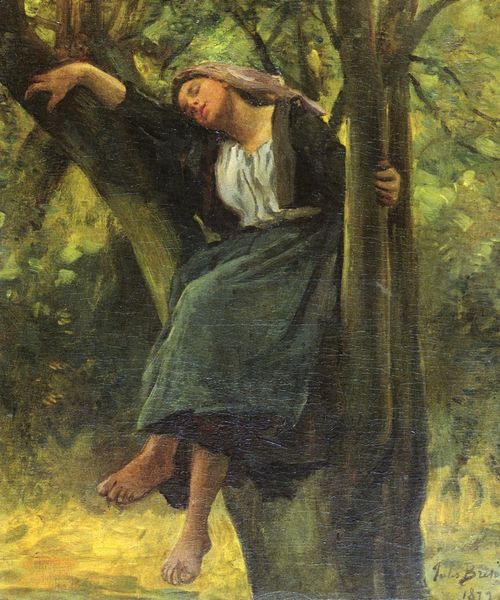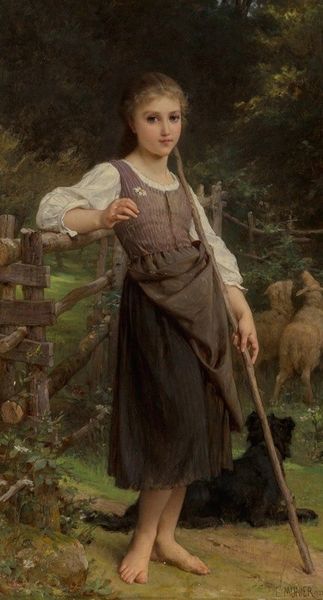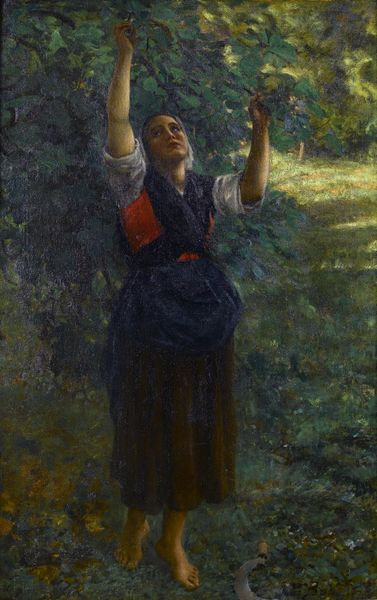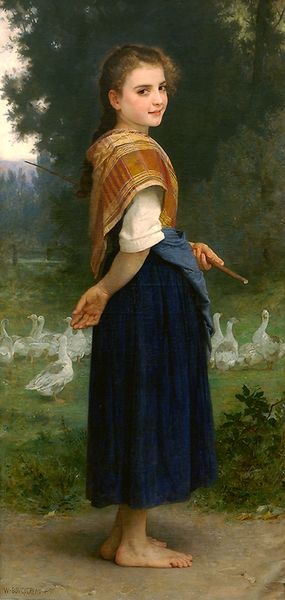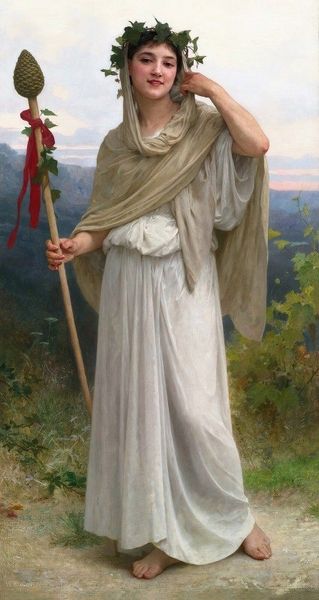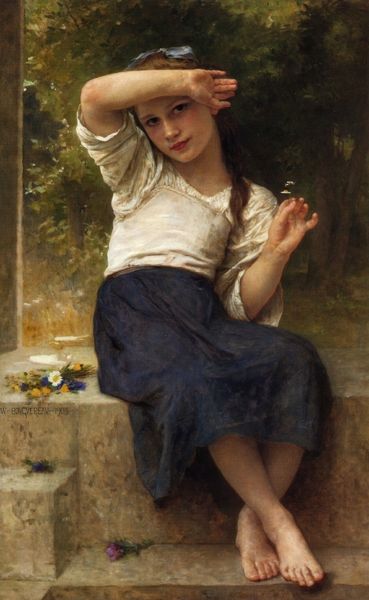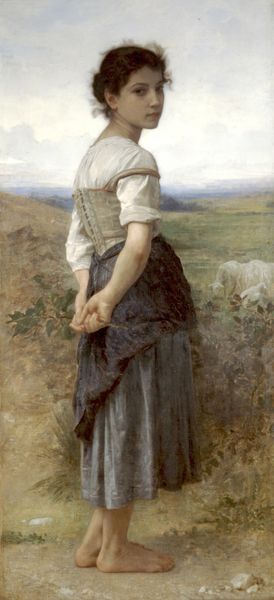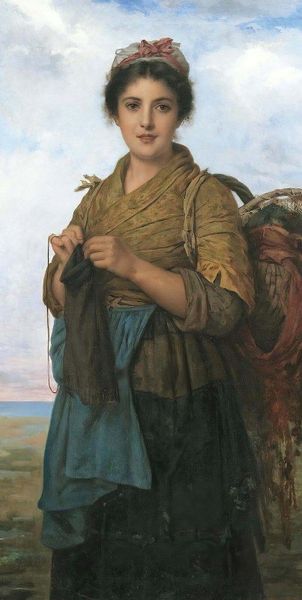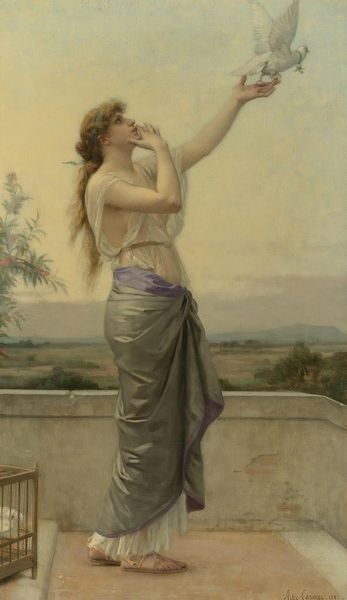
Shepherdess 1889
0:00
0:00
williambouguereau
Philadelphia Museum of Art, Philadelphia, PA, US, Philbrook Museum of Art, Tulsa, OK, US
Dimensions: 93 x 159 cm
Copyright: Public domain
Curator: Ah, “Shepherdess” by William Bouguereau, painted in 1889. It is currently co-owned between the Philadelphia Museum of Art and the Philbrook Museum of Art. Bouguereau captures this young woman in a pastoral setting with remarkable detail in oil paints. Editor: Well, she seems pretty serene. And the lighting, very soft. The palette too— earth tones but nothing jarring. Her posture and staff make me think about what "labor" really looked like in that period. What else comes to mind? I'm immediately intrigued by this work! Curator: She is the epitome of ideal beauty, the very kind which circulated around Academic art during that era. But in order to comprehend that we need to consider more than our personal aesthetics, but also those of 19th Century France. There’s also a timelessness present, where she echoes the classical, Arcadian past, and anticipates similar trends like Naturalism later in the 20th century. Editor: I suppose, she seems to embody some idealized version of labor, and almost timeless, I get it. Look how idealized, so much for raw, immediate depictions, it feels more stylized. This isn’t a criticism, because something compelling lingers about her image. Her gaze. Curator: It's interesting that you noticed that as well, it is a portrait within genre painting; a visual construction which aims to universalize woman, an emblem of feminine purity and quiet strength. The bare feet are so striking here. The pose is informal, almost casual, and she has direct contact with the nature. Editor: Right? What does it symbolize about freedom from conventional constraints? Is that too on the nose? I always ask: whose freedom is this really depicting, and at whose expense? What happens after the moment this painting captures... Curator: Those questions add rich texture! Ultimately, by blending classical and contemporary elements, “Shepherdess” shows that it’s more than just one thing: social constructs, historical context, personal impressions, or emotional triggers! Editor: It does become a great entry-point for grappling with big ideas in new ways, no? Now, that's labor I enjoy!
Comments
No comments
Be the first to comment and join the conversation on the ultimate creative platform.

